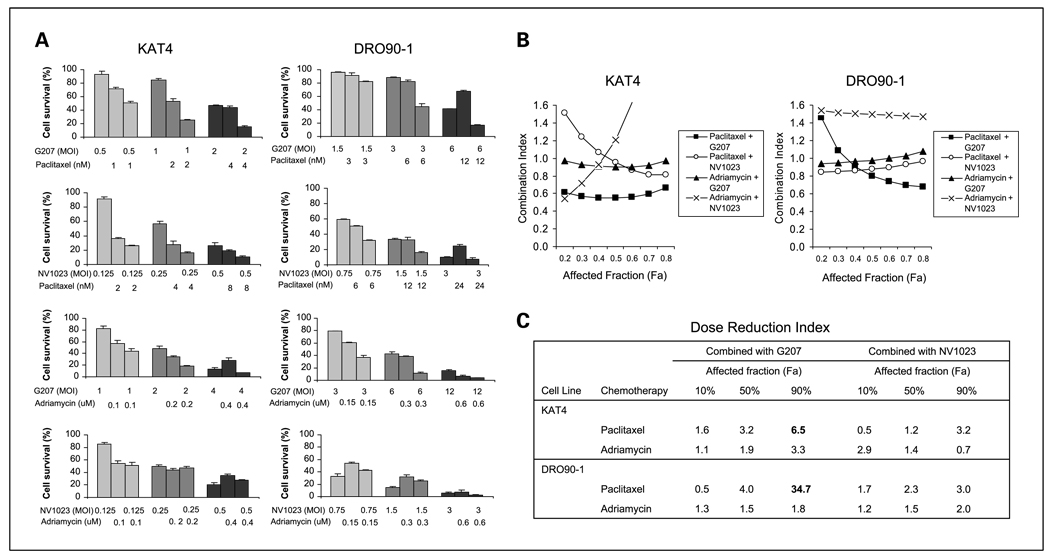Fig. 2.
Cytotoxicity of combination herpes oncolytic virus and chemotherapy. A, cytotoxic effects of G207 or NV1023 in combination with the paclitaxel or doxorubicin on KAT4 and DRO90-1on cell survival using LDH assays in vitro.Varying viral and drug concentrations were applied alone or in combination for a 4-d exposure period. G207 plus paclitaxel showed enhanced cytotoxic effects.The combinations of G207 plus Adriamycin and NV1023 plus paclitaxel showed predominantly additive cytotoxic effects for both cell lines. The combination of NV1023 plus Adriamycin failed to result in additive cytotoxic effects for either KAT4 or DRO90-1. Columns, mean; bars, SE. B, the CIs of G207 or NV1023 in combination with paclitaxel or Adriamycin were calculated using Chou-Talalay analyses and plotted against the affected fraction (Fa) or the percentage of cell death resulting from combined therapy. CI of <0.9 indicates synergy, CI between 0.9 and 1.1is addictive, and CI of >1.1indicates antagonism. Paclitaxel and G207 show synergistic effects for KAT4 and at higher affected fractions of DRO90-1. In contrast, Adriamycin and NV1023 exhibit antagonistic effects together, whereas other combinations of drug and virus were predominantly additive. C, the dose reduction index (DRI) was calculated for each drug and virus combination at various affected fractions. The dose reduction index was greatest for paclitaxel with G207 for both KAT4 and DRO90-1cell lines at an affected fraction of 90%.

